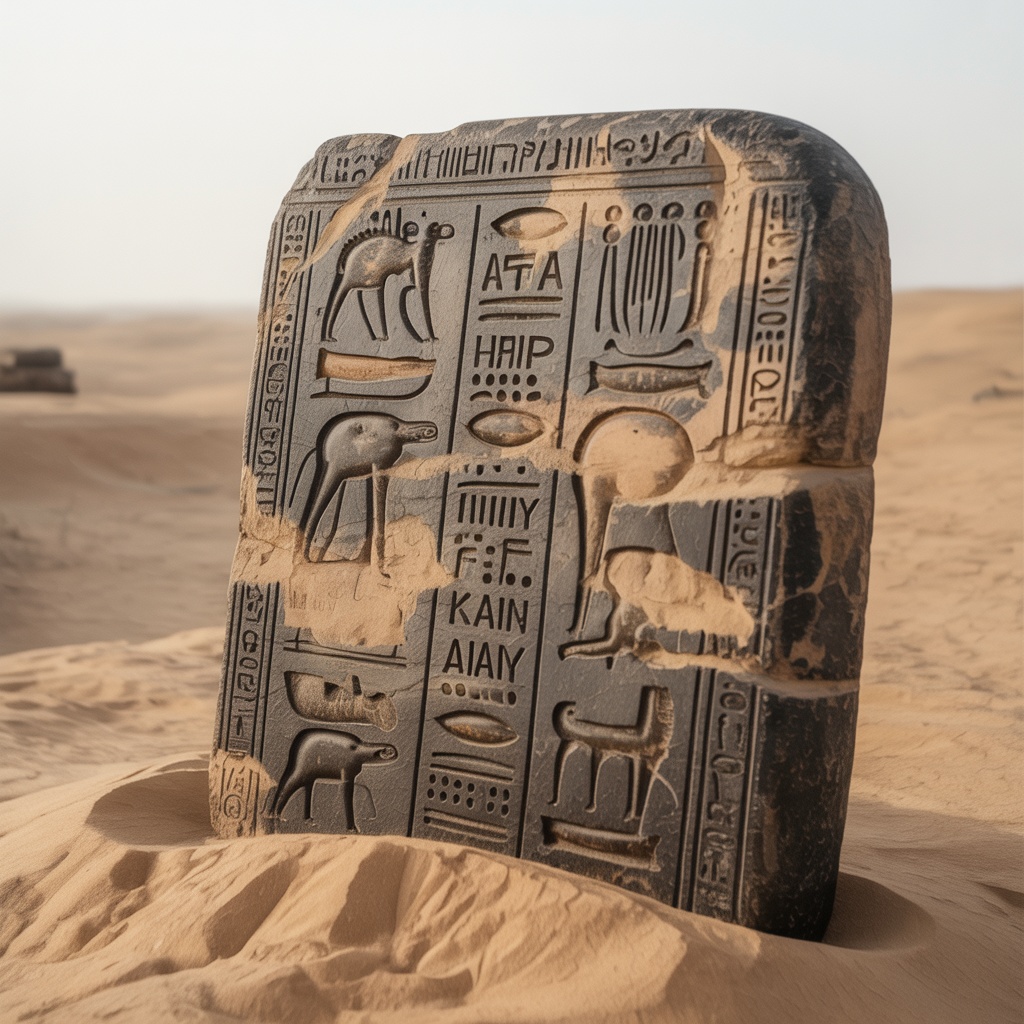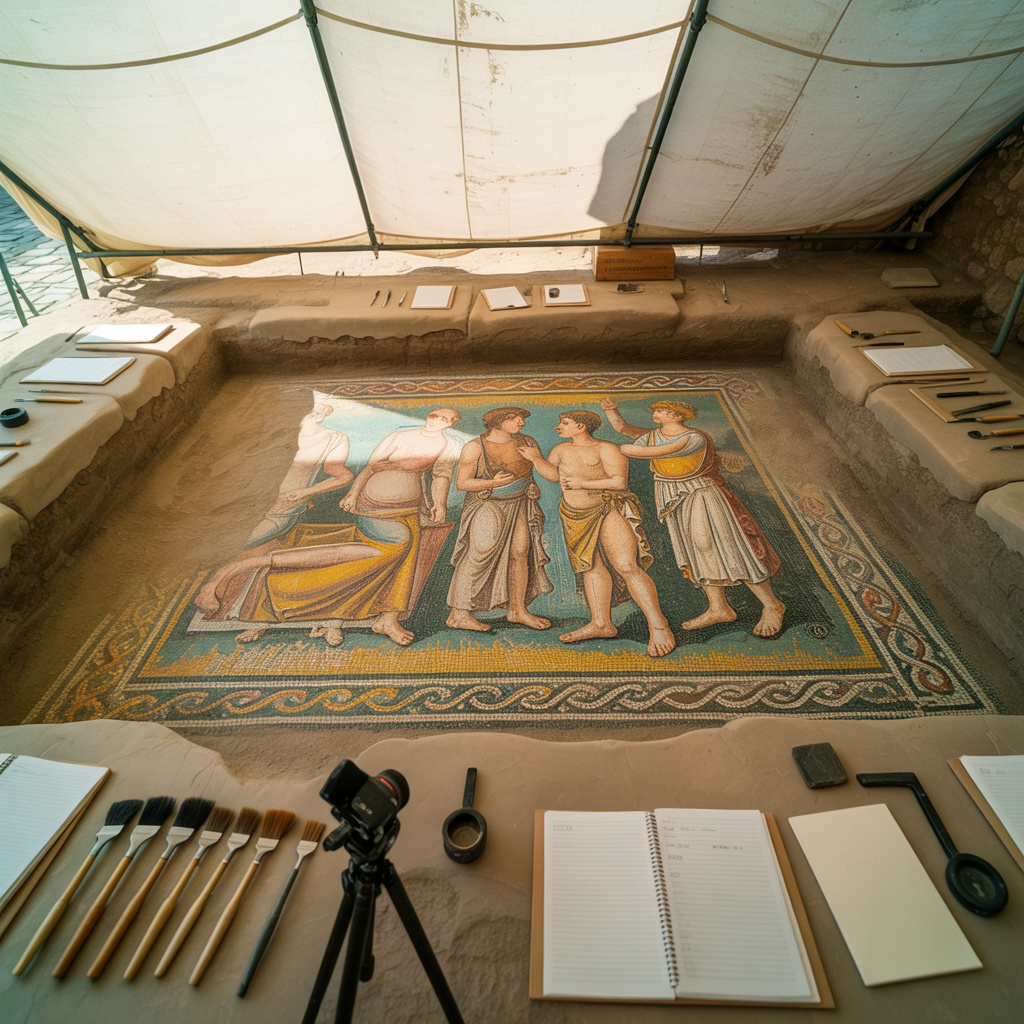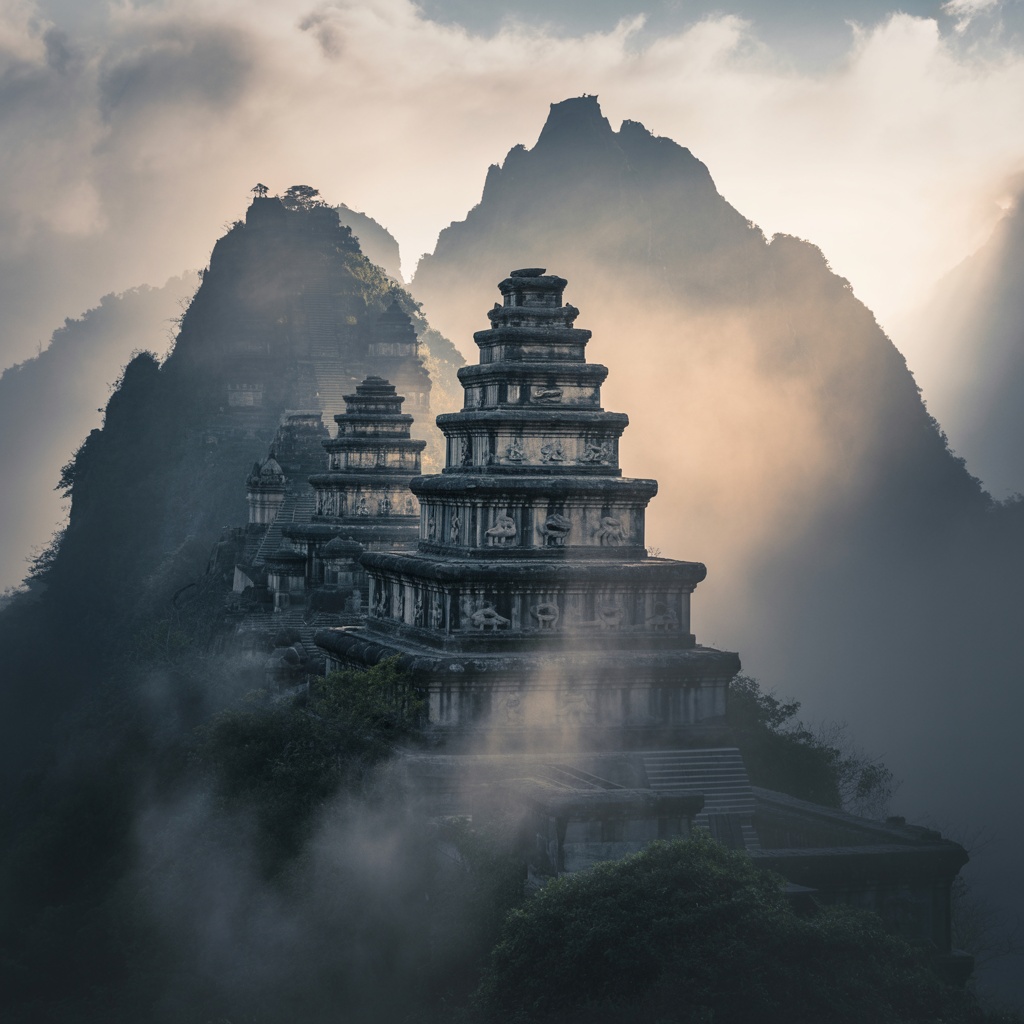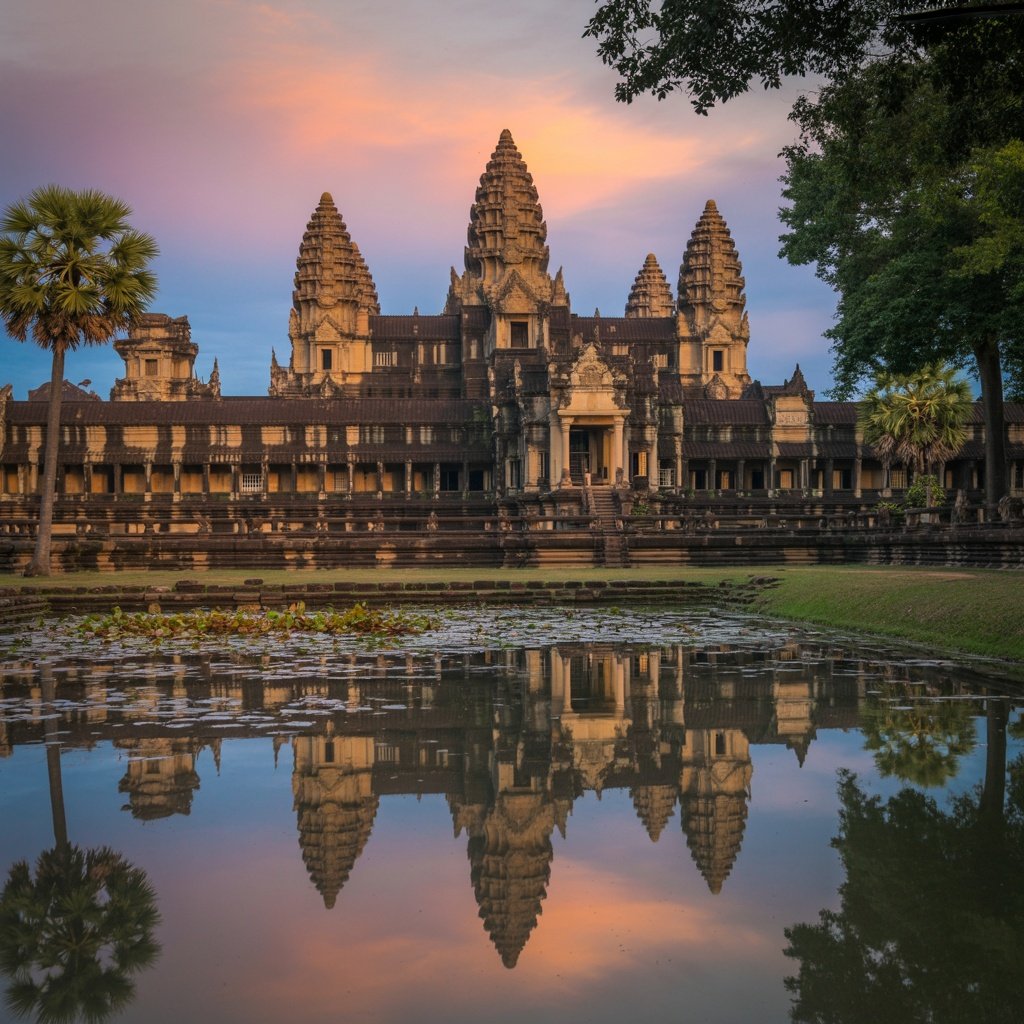Angkor Wat stands as humanity's most ambitious architectural achievement in stone, a temple complex so vast that it encompasses over 400 acres of intricate carvings, soaring towers, and engineering marvels that continue to astound modern archaeologists. Built in the 12th century during the Khmer Empire's zenith, this UNESCO World Heritage site attracts over 2.6 million visitors annually who come to witness the grandeur of ancient Southeast Asian civilisation.
As archaeological tourism specialists, we've organised dozens of expeditions to Angkor Wat, and each visit reveals new mysteries about the sophisticated culture that created this extraordinary monument. This comprehensive guide explores the temple's history, architectural significance, and travel opportunities for those seeking authentic engagement with one of archaeology's greatest treasures.
The Historical Significance of Angkor Wat
Angkor Wat was constructed during the reign of King Suryavarman II (1113-1150 CE), initially dedicated to the Hindu god Vishnu. The temple complex represents the pinnacle of classical Khmer architecture and served as the state temple and political centre of the empire. Its very name, "Angkor Wat," translates to "Temple City," reflecting its significance as both religious sanctuary and administrative capital.
What makes Angkor Wat particularly remarkable is its transformation over centuries. By the late 13th century, the temple transitioned from Hindu to Theravada Buddhist use, a conversion that occurred peacefully and preserved most of the original Hindu iconography. This religious continuity allows visitors to observe layers of belief systems coexisting within a single architectural framework.
Construction Techniques That Mystify Modern Engineers
The engineering required to build Angkor Wat remains partially mysterious even to contemporary architects. The Khmer builders quarried sandstone blocks from Phnom Kulen mountain, located approximately 40 kilometres northeast of the construction site. Each block was transported using a combination of elephant power, wooden sleds, and an elaborate canal system that researchers are still working to fully understand.
The precision with which these massive stones were fitted together—without mortar—demonstrates advanced mathematical knowledge. The temple's alignment with celestial events, particularly the spring equinox when the sun rises directly over the central tower, suggests sophisticated astronomical understanding among Khmer scholars.
Architectural Wonders of the Complex

Angkor Wat's architecture follows the classical Khmer style, but executes it on an unprecedented scale. The temple mountain design represents Mount Meru, the sacred mountain at the centre of the Hindu and Buddhist cosmos. Five towers arranged in a quincunx pattern (four at the corners, one at the centre) symbolise the five peaks of Mount Meru.
The Gallery of Bas-Reliefs
Perhaps the most extraordinary feature of Angkor Wat is its 1,200 square metres of bas-relief carvings adorning the gallery walls. These narrative sculptures depict scenes from Hindu epics—the Ramayana and Mahabharata—as well as historical processions of Suryavarman II's armies. The most famous panel illustrates the Churning of the Ocean of Milk, a Hindu creation myth showing gods and demons working together to create the elixir of immortality.
These carvings serve multiple purposes: religious instruction for the faithful, historical documentation of the empire's military campaigns, and artistic expression of the highest order. Walking along these galleries provides an immersive education in Khmer cosmology and society.
The Central Sanctuary and Tower
The central tower rises 65 metres above ground level, dominating the temple and visible from considerable distances across the surrounding plains. Originally gilded, this tower housed the primary deity statue, though the exact nature of the original image remains subject to scholarly debate. The steep stairs leading to the central sanctuary were designed to require worshippers to ascend on hands and knees, maintaining appropriate reverence.
The Khmer Empire's Engineering Mastery
Angkor Wat exists within a larger complex of hydraulic engineering that sustained a city of perhaps one million people—making it the world's largest pre-industrial urban centre. The Khmer engineers developed an elaborate system of reservoirs (barays), canals, and moats that managed water during both monsoon floods and dry seasons.
The temple's surrounding moat is 190 metres wide and serves both symbolic and practical functions. Symbolically, it represents the cosmic ocean surrounding Mount Meru. Practically, it helped stabilise the foundation, prevented tree root damage, and maintained the microclimate necessary for preserving the sandstone structure.
Recent research using LIDAR technology has revealed that Angkor Wat was part of an urban sprawl covering approximately 1,000 square kilometres, challenging previous assumptions about the temple's isolation and forcing archaeologists to reconsider the scale and sophistication of Khmer civilisation.
Visiting Angkor Wat: Archaeological Tourism Guide

Best Time to Visit
The optimal period for visiting Angkor Wat spans November through February when temperatures moderate and rainfall decreases. These months offer comfortable conditions for exploring the extensive temple complex. However, this peak season brings larger crowds. For a more intimate experience, consider visiting in May or June, accepting the heat and occasional rain in exchange for fewer tourists.
Sunrise and Sunset Viewing
Angkor Wat's sunrise viewing attracts hundreds of visitors daily who position themselves by the reflecting pools to photograph the temple silhouetted against the dawn sky. Whilst iconic, this experience can feel crowded. Sunset from Phnom Bakheng hill offers equally spectacular views with somewhat fewer people, though the climb requires moderate fitness.
Guided Tours vs. Independent Exploration
We strongly recommend engaging expert archaeological guides for your first visit to Angkor Wat. The temple's symbolism, historical context, and architectural significance become far more meaningful with knowledgeable interpretation. Independent exploration works well for subsequent visits after you've established foundational understanding.
Our archaeological expedition services arrange private tours with PhD-level guides who specialise in Khmer history and architecture, ensuring you gain insights unavailable to general tourists.
Beyond Angkor Wat: The Wider Archaeological Park
Angkor Archaeological Park encompasses over 400 square kilometres containing approximately 1,000 temples and structures from various periods of the Khmer Empire. Several warrant dedicated exploration:
Angkor Thom and Bayon Temple
Built by King Jayavarman VII in the late 12th century, Angkor Thom served as the Khmer Empire's final capital. The Bayon temple at its centre features 216 serene stone faces watching in all cardinal directions. The transition from Angkor Wat's Hindu imagery to Bayon's Buddhist iconography illustrates the empire's religious evolution.
Ta Prohm: Nature Reclaiming Architecture
Ta Prohm remains partially unreconstructed, with massive tree roots intertwining with stone structures. This temple demonstrates what much of Angkor looked like when French explorer Henri Mouhot "rediscovered" it in 1860 (though local Khmer people never lost knowledge of its existence). The tension between preservation and natural processes raises important questions about archaeological site management.
Conservation Challenges and Sustainable Tourism
Angkor Wat faces significant preservation challenges. The sandstone's porous nature makes it vulnerable to erosion, biological growth, and structural stress. The dramatically increased tourist traffic since the 1990s accelerates deterioration through foot traffic, touching of carvings, and altered humidity levels.
Multiple international organisations work alongside Cambodian authorities to preserve the site. The ICC (International Coordinating Committee for the Safeguarding and Development of the Historic Site of Angkor) coordinates research and conservation efforts, employing both traditional restoration techniques and cutting-edge technology including 3D scanning and digital documentation.
As responsible archaeological tourists, visitors can support conservation by:
- Following designated pathways and viewing areas
- Not touching carved surfaces or ancient stones
- Purchasing official admission passes that fund preservation work
- Engaging guides who emphasise conservation awareness
- Avoiding tours that access restricted or fragile areas
Archaeological Mysteries Still Being Unravelled
Despite extensive research, Angkor Wat continues revealing secrets. Recent discoveries include:
Hidden Temple Paintings
In 2010, researchers discovered previously unknown paintings in the central tower, depicting boats, deities, and animals. These paintings, dating from the 16th century, demonstrate continued use of the temple long after the Khmer Empire's decline.
Underground Structures
Ground-penetrating radar has identified anomalies beneath the temple suggesting underground chambers or tunnels. These structures' purposes remain unknown—possibilities include royal tombs, treasure caches, or hydraulic infrastructure. Excavation proceeds cautiously to avoid destabilising the temple above.
Population Estimates
LIDAR mapping revealed a much larger urban area than previously known, forcing revision of population estimates upward. Some archaeologists now suggest the greater Angkor region supported 750,000 to 1,000,000 people during its peak, making it larger than contemporary European cities.
Planning Your Angkor Wat Expedition

Visa and Entry Requirements
Cambodia offers visa-on-arrival for most nationalities (USD 30 for tourist visa). Angkor Archaeological Park requires separate admission: USD 37 for one-day pass, USD 62 for three-day pass (valid within one week), or USD 72 for seven-day pass (valid within one month). The three-day pass provides optimal time for exploring major temples without excessive rushing.
Accommodation Options
Siem Reap town, located 6 kilometres south of Angkor Wat, offers accommodation ranging from budget guesthouses to luxury heritage hotels. We recommend staying at properties that demonstrate commitment to cultural preservation and employ local staff, ensuring tourism benefits the community.
Cultural Sensitivity
Angkor Wat remains an active religious site where monks pray and locals worship. Respectful behaviour is essential: dress modestly (covering shoulders and knees), speak quietly in temple areas, ask permission before photographing monks or worshippers, and never climb on fragile structures despite what other tourists may be doing.
Connecting Angkor Wat to Other Archaeological Destinations
Your expedition to Angkor Wat can extend to other significant archaeological sites in the region:
- Preah Vihear: A mountaintop temple on the Cambodia-Thailand border offering spectacular views and impressive architecture with far fewer visitors than Angkor Wat.
- Banteay Srei: Known as the "Citadel of Women," this smaller temple 25 kilometres from Angkor features exquisitely detailed carvings in pink sandstone.
- Koh Ker: A remote temple complex that briefly served as the Khmer capital, featuring the impressive seven-tiered Prasat Thom pyramid.
For those interested in comparing temple complexes across Southeast Asia, consider combining your Angkor visit with expeditions to Mayapan in Mexico for parallels in ceremonial architecture, or exploring ancient Indian technological achievements that contemporary the Khmer Empire.
